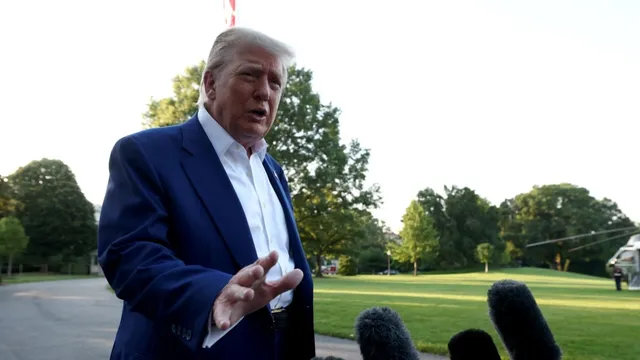
Trump urges NATO allies to commit to increased defense spending
2025-06-24 18:43- U.S. President Donald Trump attended a NATO summit in The Hague amid tensions from recent U.S. strikes on Iran.
- The main focus of the summit was to discuss increasing NATO members' defense spending from 2% to 5% of GDP.
- Diplomatic efforts aimed at projecting unity among allies were emphasized to manage potential conflicts during discussions.
Express your sentiment!
Insights
The Netherlands hosted U.S. President Donald Trump for a crucial NATO summit, marking his first meeting with allies at this level since returning to the White House earlier in January. Although the official agenda did not prioritize the Middle Eastern conflict, tensions surrounding recent U.S. airstrikes on Iran loomed large over the three-day discussions. Trump expressed dissatisfaction with both Iran and Israel for the escalation of hostilities, which contributed to the charged atmosphere at the summit. During this gathering, the defense spending commitment was a key topic of conversation. Trump sought to increase NATO members' spending target from the current 2% of GDP to 5%, highlighting the U.S.'s significant historical contributions to NATO's defense efforts. European leaders, keen to maintain unity, were advised to keep discussions straightforward to avoid public disagreements while acknowledging Spain's unique circumstances regarding defense spending requirements. The summit not only focused on military expenditure but also aimed to project a unified front among NATO allies. While Trump’s administration desired formal commitments from the other 31 members to elevate defense spending, European leaders contended that they would need time to meet these newly proposed levels. By mid-summit, attention was also directed toward the ongoing crisis in Ukraine, with a determination among NATO partners to bolster support. Trump was expected to emphasize this issue, reiterating the United States's exemption from the new spending target due to its disproportionate contributions to NATO. The summit ultimately symbolized a continued effort to strengthen the alliance amidst growing geopolitical complexities, showing both the need for increased military readiness and the delicate balance of diplomacy among member states.
Contexts
NATO's defense spending commitment changes have become a focal point in geopolitical discussions, particularly in light of the shifting dynamics of global security. Member states have increasingly recognized the necessity of bolstering defense budgets in response to evolving threats, including cyber attacks, hybrid warfare, and the resurgence of aggressive postures from state actors. The insistence on raising defense spending to at least 2% of GDP, a target established at the Wales Summit in 2014, has driven significant policy shifts across various member nations. This commitment reflects a collective understanding of the need for enhanced military readiness and capability, underlining the shared responsibility of individual states towards collective security within the NATO framework. As NATO approaches the decade since this commitment was established, several member countries have not only pledged but have also made substantial progress towards meeting the 2% target. Countries such as Poland and the Baltic states have notably exceeded this benchmark, driven by their immediate regional security concerns and historical experiences. Others, including Germany and France, have introduced comprehensive defense reform strategies aimed at scaling their military budgets. This evolution symbolizes a broader trend of acknowledging that national security cannot solely rely on the United States, especially in light of its fluctuating foreign policy focus. Consequently, NATO's strategic coherence hinges on the collective investment of all its members. The commitment to increased defense spending has been accompanied by significant debates surrounding the allocation of resources and the need for modernization of military capabilities. Emerging threats, particularly in cyber warfare, have necessitated a shift in traditional military spending towards investments in new technologies and capabilities. NATO has emphasized the importance of not just meeting the financial benchmarks, but also ensuring that spending translates into tangible improvements in military effectiveness and interoperability among member states. The focus on joint exercises, enhanced training programs, and better equipment also contributes to building a more cohesive defense posture against potential adversaries. Looking forward, NATO's challenge remains to sustain the momentum of increased defense commitments while adapting to an ever-changing security landscape. The recent geopolitical shifts necessitate a continuing dialogue on burden-sharing and the necessity for collective defense. As nations navigate their domestic political landscapes, ensuring that defense spending remains a priority amidst competing budgetary demands will be crucial. The commitment to defend against multifaceted threats, while fostering a strong transatlantic alliance, will define NATO's evolution in the coming years.